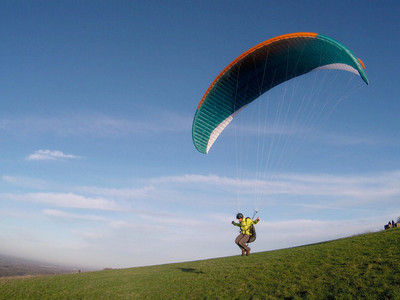
Reviews of the Advance IOTA paraglider by Carlo Borsattino and Greg Hamerton of Flybubble. The IOTA is the new XC class 'high-end EN B' wing from Advance Paragliders. It's designed to fit between the Progression class 'easy EN B' EPSILON 7 and the Sports class EN C rated SIGMA 9 in their range of paragliders. So what do Carlo and Greg from Flybubble make of it?
Advance IOTA review by Carlo Borsattino, Flybubble
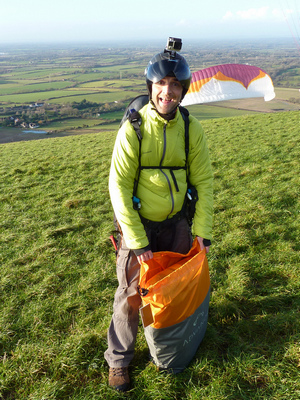
In October 2014 Advance made a surprise announcement: "At the beginning of November ADVANCE will announce a new product that will make a large number of pilots very happy." with nothing more than an image of paper plane to go with it. A lot of speculation quickly followed about what this new product could be: "The new Omega 9?" some speculated. "The Alpha 6?" or "A new rucksack?" others countered. "A hang glider?" one joked, grasping the air for flying straws.
Then on the 6th November Advance released a video teaser called "Something in the Air - Episode #1" in which Advance R&D team pilots Kari Eisenhut, Silas Bosco and Greg Blondeau made the first mention of a new wing to be added to the Advance range, the IOTA, a high-end B wing to sit between the EPSILON 7 and SIGMA 9. But this first video episode didn't actually show the wing! Pilots had to wait for Episode #2 when they finally got to see the new IOTA in action - and what they saw looked good!
We'd already ordered our IOTA demos, to add to our Flybubble fleet, and received our first size 26 from Advance in mid-January 2015. Now we just needed the weather to cooperate so we could try it for ourselves and the 16th of January turned out to be the first such day - hooray!
Out of the bag the IOTA is compact and light. Advance say 4.85 kg for the size 26, which has an all-up flying weight range of 75-100 kg. The risers are of the usual high build quality we'd expect from Advance and very nicely designed with excellent features: ceramic rings for the brake lines (why use pulleys here?); top quality Ronstan pulleys for the speed system (less friction = lighter speed system); two-geared speed system with stopper ball; and Advance's useful Speed-Performance-Indicator.
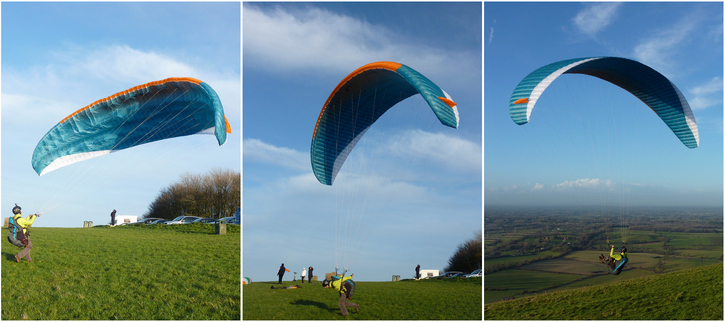
Unfurling the wing reveals very similar "semi-lightweight" materials and construction to the SIGMA 9. Checking the materials list confirms this.
Inspecting the shaping and structure of the leading edge we find a very clean looking nose, and Advance's semi-circular cell openings with a moderate shark nose. Advance explain: "The unique combination of the ADVANCE semi-circular inlets and Air Scoop Technology enables a significantly lower brake position at stall and considerably larger progressivity in brake pressure, yielding a lower spin tendency when flying curves." See Advanced Air Inlet Design video
Looking inside the wing reveals a complex internal structure which Advance describes as "initially reminiscent of a block of Swiss cheese". Advance explains that this is the result of an "intensive development process" of "structural weight optimization" which they say has resulted in a wing which is "noticeably lighter and yet still durable, with an unvarying flight behaviour over time." See Structural Weight Optimization video
To the surprise of some, Advance have decided to fit the IOTA with 100% unsheathed lines: "The IOTA comes 100% equipped with low stretch, unsheathed aramid lines manufactured by Edelrid. There are no Dyneema lines used at all.", they write. This may put some pilots off the IOTA as unsheathed lines tend to knot more easily, knots are harder to spot and untangle, they get damaged more easily, and they don't last as well in UV. However, not all unsheathed lines are created equally! For example, our experience with other wings using the same unsheathed lines as the IOTA (e.g. Advance SIGMA and OMEGA) shows that they are less prone to tangling than some other unsheathed lines (however they still tangle more easily than most sheathed lines), they haven't broken more easily, and they last extremely well. There's a big bonus to unsheathed Aramid lines which is often overlooked: They have excellent dimensional stability i.e. they don't shrink or stretch like some other lines do, so there's no need to have the IOTA's lines checked by an approved service centre after 30-50 hours, unlike some other modern wings with Dyneema lines. Advance are clearly convinced: "Many years of experience using this top-quality product are evidence that the advantages of using unsheathed Edelrid lines dominate over all alternatives." See IOTA lines video
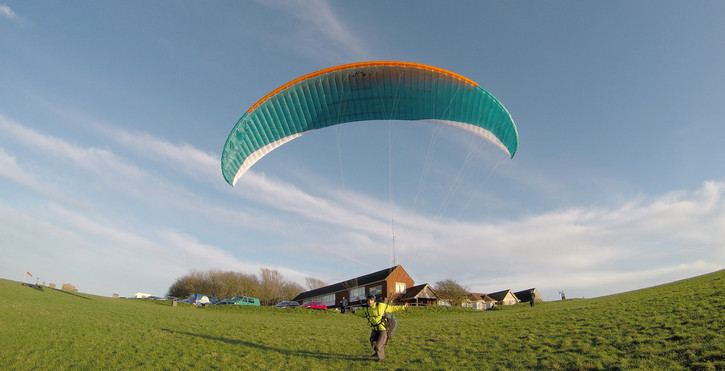
Popping the IOTA up and immediately you are struck by how astonishingly clean the sail looks. Casting a critical eye along the leading and trailing edges, wingtips, and across the top and bottom surfaces, it must surely be one of the smoothest wings we've ever seen! Advance explain how they've achieved this: "Our design tools and methods are capable of computing the distribution of forces and strains in the entire canopy. The optimal aeroelastic design, from 3D panel shaping through to ballooning, is achieved in an iterative, computational process. This enables the maximum conversion of theoretical performance into real performance." See Real Tension Control video.
Anyway, enough about the materials and construction of the IOTA, which you can read all about in the product description. "What's it actually like to launch and fly?!" I hear you all scream! 😉
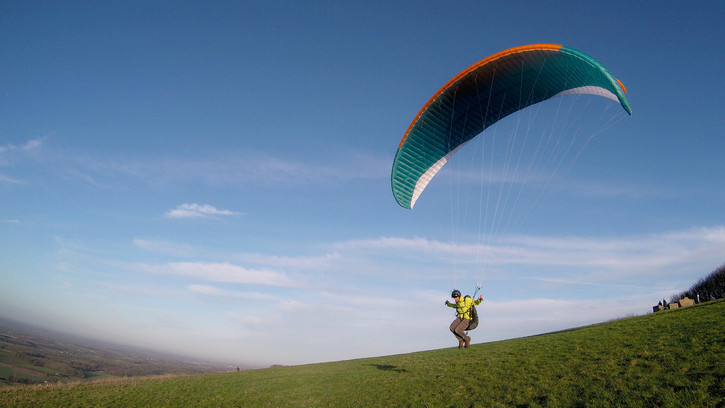
The day started with not quite enough wind to soar and was nearly blown out by the end of it, so we got to try the IOTA in a good variety of wind strengths. In light to moderate winds IOTA inflates very easily (despite its relatively small cell openings) and risers smoothly and progressively overhead, without either hanging back or coming up too aggressively (as long as you don't pull too hard). In anything other than nil wind you don't really need to pull on the A risers at all; just leaning back with your body, then stepping towards the wing as it comes up, should be all that is required.
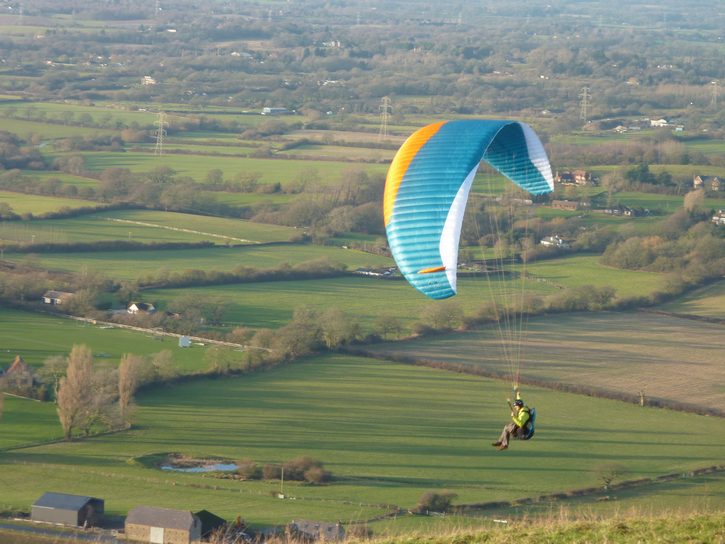
Once above my head I found I needed to apply a little brake to keep the IOTA from overshooting as it wants to move forwards. As an experienced pilot with good ground handling skills, I like this characteristic as it means that even on light wind days you can keep the wing flying whilst waiting for a good lift cycle to come through; very useful on small hills with short thermal cycles! Also I see this is a good sign that in flight the wing will cut better through gusts and turbulence, and want to pull into thermals positively, rather than hanging back. However a beginner pilot, or a pilot with poor ground handling skills, might find the IOTA overflying them and tucking unexpectedly on occasion. This is to be expected for a high end EN B wing, aimed at pilots with reasonably good glider control skills. The IOTA is not a beginner wing.
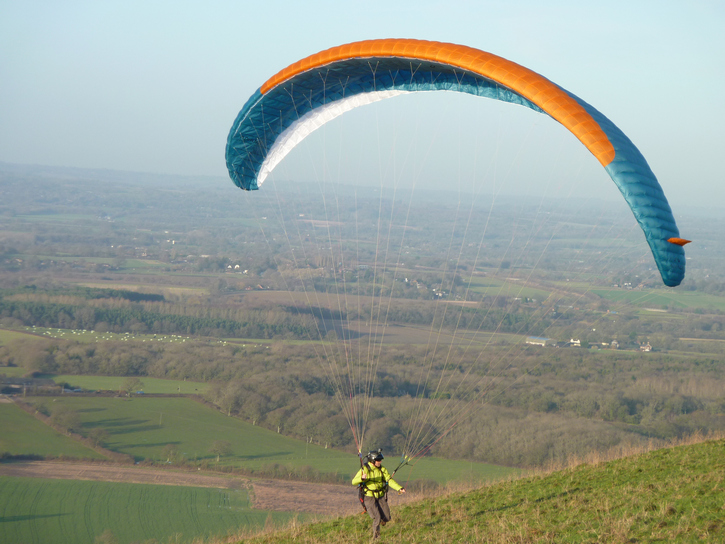
Launching in light winds on a gentle slope that positive pitch comes nicely in to play as the IOTA accelerates with the pilot, again not hanging back or over-pitching forwards, and lifting you off the ground easily. On my very first launch I was immediately struck with how efficient it feels, as I needed to run much less than expected to lift off. This also indicates good sink rate and glide, but of course I can't quantify this - and most glide comparisons done in anything other than completely still air (a rare thing) are misleading at best anyway.
Conditions were a bit too light to soar, ideal for testing out how good the IOTA is at staying up in light winds. Even one pilot flying an under-loaded EN D wing with a very good sink rate wasn't maintaining. Slowing the IOTA down to near min sink, I was impressed by how it converted the speed into height and I managed to float along quite nicely for a couple of beats, which was as much as the oversized EN D wing could manage. Impressive!
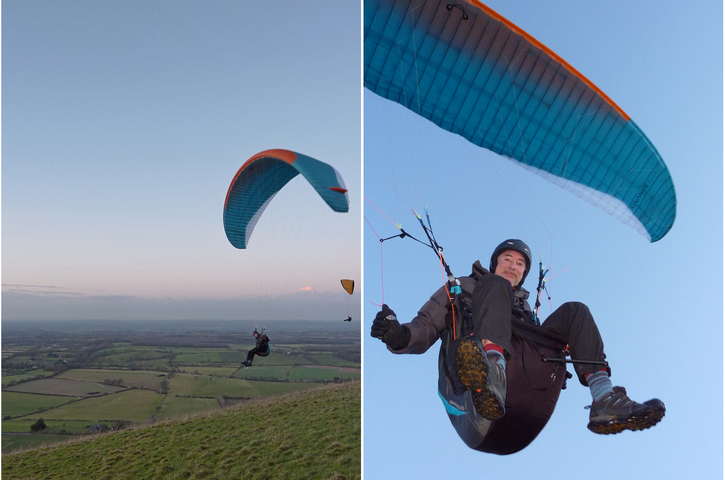
I had several more short flights on the IOTA, getting to know its handling and flight characteristics, and tried different launch techniques, ground handling, and kiting it around. The wing communicates well through the rises and brakes, giving a nice moderate level of feedback. Brake pressure is moderate with progressive, moderate travel length. The IOTA responds quickly to control inputs, and first impressions are that it's one of the more responsive and agile wings in its class. I tried a series of hard banking turns, and the IOTA responded energetically and converted height beautifully. It certainly put a smile on my face! :)
That's all I can say for now. The Flybubble team will be testing the Advance IOTA more - hopefully much more - soon!

Advance IOTA review by Greg Hamerton, Flybubble
Creating a good wing is always a balance between many design parameters. When you increase turn agility, you often decrease roll stability, when you optimise glide performance, handling can suffer. It takes a long time to trim all these characteristics to achieve the absolute maximum of a design. In the hustle and bustle of modern competitive paraglider manufacturing, designs can be hurried to market when they are 'good enough' even when the designer knows how to improve them. After all, there's always the next model.
It's refreshing to see the Advance philosophy in action. Their legendary prototype testing and review stage often leaves fans of the brand baying for the new release for months or years, but when the wing arrives it doesn't disappoint. The Iota looks refined from the moment you pull up behind it and marvel at the knife-edged trailing arc.
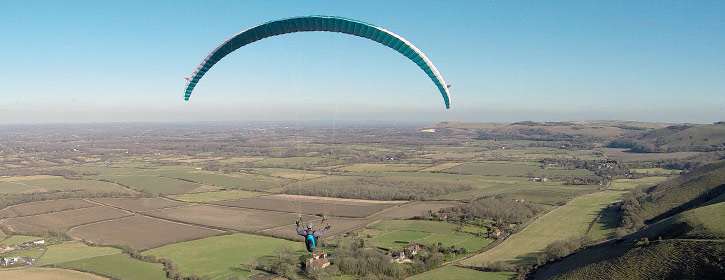
^ Perfect.
It offers a crisp, responsive turn with moderate brake pressure and an average amount of brake travel to maintain a good thermaling circle. I felt no need to take wraps and the wing responded very well to my weightshift inputs, giving me great contact with the thermal and turn authority.
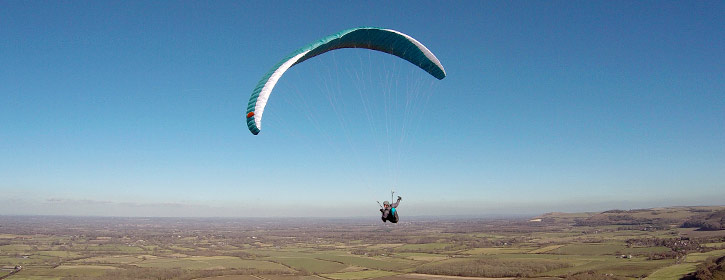
^ A well-rounded design with excellent turn response for thermaling.
If you try to force the wing to spin it takes a lot of yanking to get it to slip. The same with the stall point, I found it allowed a generous deep brake and slow flying before snapping back in a stall. It doesn't want to linger there and pulls positively out of the stall. I'd say the brake response is about as perfect as you could get for this class.
It has all the energy you'd want for playing around with wingovers and SATs, a speedbar that easily allowed me to reach full acceleration, and a relatively limited camber with low volume aerofoil that reduces wing inertia and makes recovery fast and hassle-free. Big asymetrics and full frontals would unnerve beginners with the sporty and energetic responses that place it firmly in the XC Class, but small corrections made the responses entirely benign. I even threw in a B-line stall in my testing, because I could - simple steady instant descent, like operating an elevator. Bye bye cloud suck.

^ Looks good from every angle
It's a pity that the wingtip line set is attached to the C risers, because when trying to pin the wing down in strong wind the tips want to fly up unless you grab the inner C lines themselves.
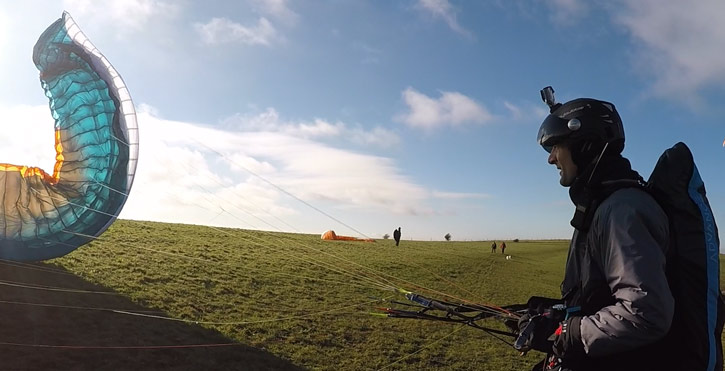
No doubt this has something to do with maintaining good collapse resistance when accelerated. In effect, you cannot accelerate the tips, which suggests they are already trimmed for as much performance and low drag as possible.
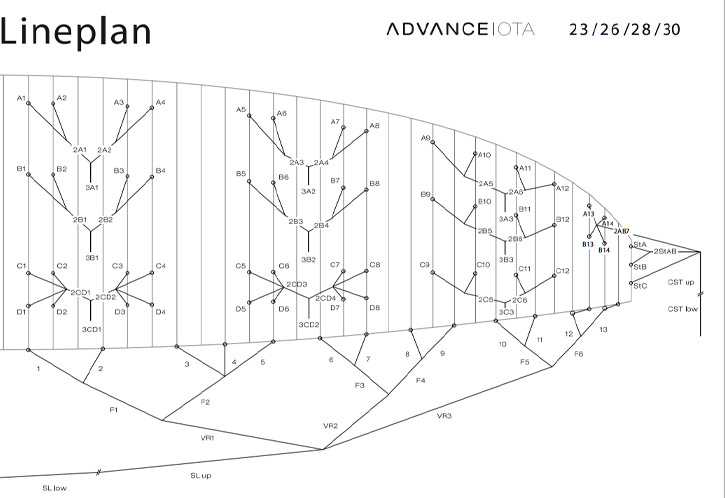
My only other reservation is the unsheathed lines across the whole wing. Being accustomed to thorny vegetation hooking out fibres I tend to prefer sheathed lines whenever possible, but these lines are specially coated and look durable. On the flip side, they maintain their exact length better and reduce the line drag slightly.

If feeling and appearance alone determined performance, the Iota would certainly lead the XC class. It will take some time to judge the real world gliding power, but the agile thermaling, balanced feedback and sweet handling will go a long way to get you to the top of the stack first, and your mates will be watching you gliding away, wishing they had one!
Available to demo at Flybubble (for a limited time).
Find out more about the Advance Iota here >
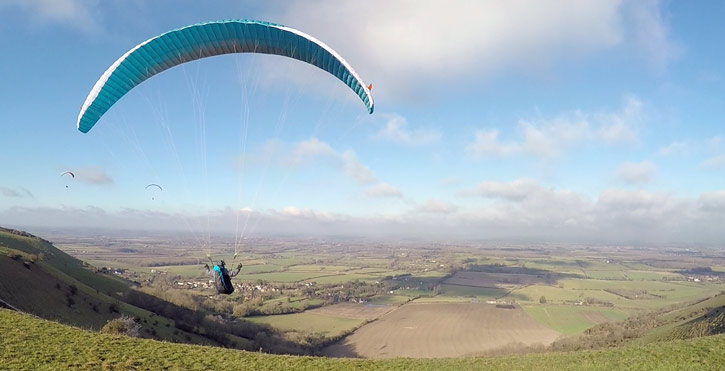
PS. Don't be in a hurry to bypass the wonderful EPSILON 7 if your experience and current skills are more suited to the Progression class. The IOTA is a clear step up in demands on the pilot - you need to be doing the right things in turbulence. Watch our class comparison video to help you decide.
